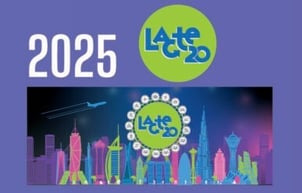There’s no denying it — work has changed, permanently. These days, it’s common for a single project team to span three or four time zones. One team member might log in from London, another from Warsaw, and another from Cape Town or Singapore. The era of fixed offices and face-to-face collaboration is fading fast. In its place, we now have something more flexible, more borderless — and far more complex.
As remote and hybrid models become standard across industries, many businesses have embraced the advantages: access to a broader talent pool, lower overheads, and greater agility. But along with those benefits come new communication challenges. Chief among them is the growing need to communicate effectively across languages. When your workforce is scattered across continents — and when English isn’t everyone’s first language — clear, accessible communication becomes a strategic priority.
This shift isn’t just happening at the fringe. Recent global data shows that over 28% of professionals now work remotely at least part of the time. In regions like the UK and wider Europe, hybrid work is continuously increasing. With more companies operating in multiple countries and managing multilingual, multicultural teams, business communication is no longer one-size-fits-all. Language — often overlooked — has become one of the most critical enablers of team cohesion and business performance.
In this article
- Communication isn't just a soft skill—it's operational infrastructure
- Multilingual communication as a growth lever, not a cost
- Where traditional multilingual solutions fall short
- Technology that fits how teams already work
- What a language-ready organisation looks like
- Looking ahead: language as infrastructure, not afterthought
Communication Isn’t Just a Soft Skill — It’s Operational Infrastructure
In global organisations, miscommunication doesn’t just cause frustration. It causes delays, lost opportunities, disengagement, and even compliance issues. Consider the simple act of a company-wide all-hands meeting. If the messaging is only delivered in English, and some employees are less confident in the language, the meaning might be diluted — or missed entirely. A strategic update from the CEO, intended to unify and inspire, may instead leave parts of the workforce feeling excluded or unsure. And that disconnection can ripple outward into performance, participation, and overall morale.
It’s not about fluency. Even highly skilled professionals who use English every day might struggle in fast-paced virtual meetings, especially when topics are technical or sensitive. They may hesitate to ask questions or offer input. The effort of constantly interpreting, translating, and catching up can lead to cognitive fatigue, which in turn affects how people show up and contribute.
This has very real implications for business leaders. It’s no longer enough to hire globally—you also have to communicate globally. That means thinking beyond English, and beyond traditional translation. It means reimagining how you design meetings, training sessions, internal communications, and digital experiences, so that everyone — regardless of language — has equal access to information, and an equal voice.
Multilingual Communication as a Growth Lever, Not a Cost
Too often, language access is treated as an operational add-on. Something for external events, maybe, or high-profile client meetings. But forward-thinking organisations are beginning to view it differently. Rather than seeing it as a reactive service, they’re embedding multilingual support into the fabric of their internal operations. And the payoff is significant.
When people hear and engage in their own language, alignment happens faster. Projects move forward with fewer misunderstandings, fewer clarifications, and less rework. Employees feel more confident, more informed, and more likely to participate in discussions or offer ideas. In settings like onboarding and training, comprehension improves — along with retention and performance. And in all-hands meetings or HR communications, clarity helps ensure policies are understood and acted on consistently across regions.
It’s not just about efficiency. Multilingual access also sends a message: that the organisation values its people, wherever they are, and respects their preferred way of engaging. That feeling of inclusion builds trust and loyalty, which, over time, influences culture and retention. In today’s competitive talent market, where employee experience plays such a huge role in attracting and keeping skilled professionals, this kind of cultural signal can’t be underestimated.
Where Traditional Multilingual Solutions Fall Short
In many organisations, multilingual communication still relies on a patchwork of tools and workarounds. Key documents are translated after the fact, webinars are subtitled days later, and meetings are often held in a single default language — usually English — regardless of who’s in the room. It’s a system that works, in a limited way. But it’s far from inclusive, and it certainly isn’t agile.
These traditional approaches are slow to update, expensive to scale, and often fail to keep up with the fast pace of remote work. They also put an unfair burden on non-native speakers — asking them to process important information on the fly, or stay silent when they’re unsure. And for organisations that truly want to operate globally, that kind of friction adds up quickly.
What’s missing in these models is real-time access. The ability for people to understand and engage while the conversation is happening — not hours or days later. That’s where remote interpreting platforms like Interprefy come in.
By embedding remote simultaneous interpretation, AI speech translation, or live captions directly into virtual meetings and events, Interprefy enables teams to communicate clearly across languages without the delays or limitations of static and expensive traditional interpreting. Whether through professional interpreters working remotely or AI-powered speech translation, employees can follow and participate in their preferred language — as the conversation unfolds.
There’s no waiting for subtitled recordings, no need to scan transcripts, and no risk of being left behind. It’s a seamless experience, built for how remote teams actually work today. And for organisations with global ambitions, it turns multilingual communication from a bottleneck into a strength.
Technology That Fits How Teams Already Work
One of the reasons multilingual communication is finally becoming scalable is that it no longer requires complicated setups or dedicated equipment. Interprefy, for example, works with the tools that teams already use every day — Zoom, Microsoft Teams, Webex, and others. Interpreting support can be added to a virtual meeting with just a few clicks, and attendees can toggle language channels as needed.
Related Customer Story
The Super Patch Company Scales Multilingual Engagement with Interprefy
This kind of integration is key. In today’s remote-first world, teams don’t want to switch platforms or learn new systems just to access interpretation. They want it to be frictionless. And increasingly, that’s exactly what the technology delivers — whether the session is live, pre-recorded, or hybrid.
It’s also adaptable. For high-stakes meetings or nuanced discussions, professional human interpreters ensure accuracy and preserve tone. For regular updates or recurring internal training, AI sppech translation offers a fast, scalable alternative. Businesses don’t need to choose one or the other — they can blend both approaches based on their needs.
This flexibility is particularly valuable for HR leaders, internal communications teams, and department heads who are trying to balance cost, speed, and quality — often across multiple countries and functions.
What a Language-Ready Organisation Looks Like
Truly multilingual organisations don’t just switch on interpreting for one meeting and call it a day. They embed language access into the way they operate. That means making it part of planning discussions from the start. It means budgeting for interpretation in the same way you budget for IT support or video tools. And it means encouraging teams to use these features without hesitation or self-consciousness.
It also requires a bit of cultural change. Managers need to get comfortable hosting meetings where interpretation is happening in the background. Presenters need to learn how to pace themselves to allow for interpreting flow. And companies need to normalise multilingual meetings as part of daily business, not just special events.
But when that shift happens, the results speak for themselves. You start to see more hands raised, more people contributing, and more consistent engagement across locations. You also see fewer misunderstandings, less duplicated work, and a much greater sense of cohesion—no matter how many miles separate your teams.
Interprefy Plans help you plan for the year
Click here to explore Interprefy Plans
Looking Ahead: Language as Infrastructure, Not Afterthought
As remote and hybrid work continue to evolve, the businesses that succeed will be those that treat language as part of their core infrastructure — not a patch or a perk. Just as we expect every employee to have internet access, video capability, and security tools, we should also expect them to have access to communication in a language they understand.
The future of global work is multilingual by default. Not because it’s nice, but because it works. Because when everyone understands what’s being said, they can act faster, make better decisions, and feel more confident in their contributions. And when companies create space for that to happen — through the right tools, policies, and culture — they don’t just improve communication. They build better businesses.
At Interprefy, we believe this is the direction every global organisation is heading. We’re already seeing it play out with our customers — whether they’re rolling out international training programmes, hosting inclusive town halls, or simply trying to bring more voices into the room.





 More download links
More download links



